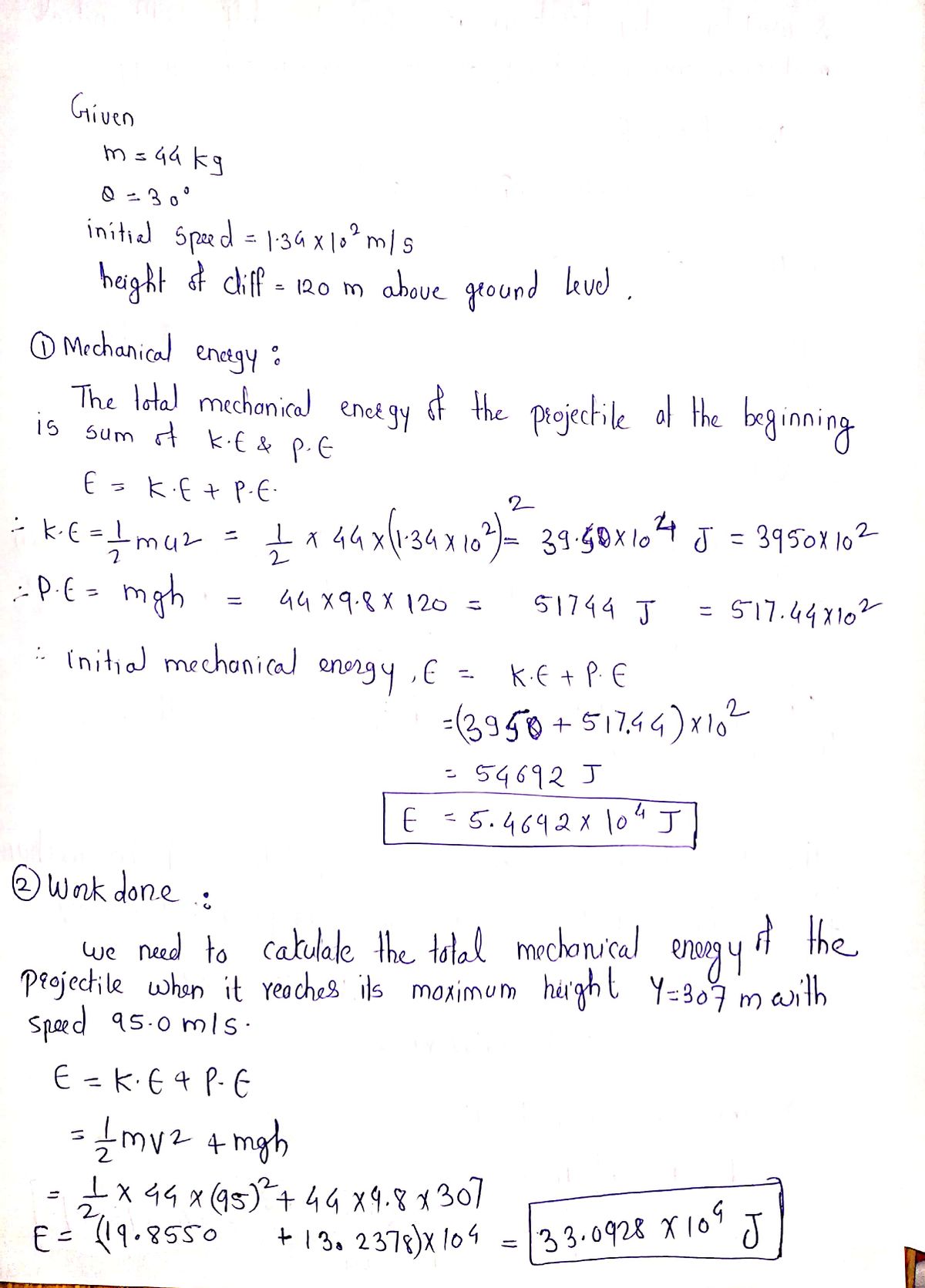A 44.0-kg projectile is fired at an angle of 30.0° above the horizontal with an initial speed of 1.34 x 102 m/s from the top of a cliff 120 m above level ground, where the ground is taken to be y = 0. (a) What is the initial total mechanical energy of the projectile? (b) Suppose the projectile is traveling 95.0 m/s at its maximum height of y = 307 m. How much work has been done on the projectile by air friction? (c) What is the speed of the projectile immediately before it hits the ground if air friction does one and a half times as much work on the projectile when it is going down as it did when it was going up? m/s Need Help? Read It
A 44.0-kg projectile is fired at an angle of 30.0° above the horizontal with an initial speed of 1.34 x 102 m/s from the top of a cliff 120 m above level ground, where the ground is taken to be y = 0. (a) What is the initial total mechanical energy of the projectile? (b) Suppose the projectile is traveling 95.0 m/s at its maximum height of y = 307 m. How much work has been done on the projectile by air friction? (c) What is the speed of the projectile immediately before it hits the ground if air friction does one and a half times as much work on the projectile when it is going down as it did when it was going up? m/s Need Help? Read It
Related questions
Question
100%

Transcribed Image Text:A 44.0-kg projectile is fired at an angle of 30.0° above the horizontal with an initial speed of 1.34 × 102 m/s from the top
of a cliff 120 m above level ground, where the ground is taken to be y = 0.
(a) What is the initial total mechanical energy of the projectile?
(b) Suppose the projectile is traveling 95.0 m/s at its maximum height of y = 307 m. How much work has been
done on the projectile by air friction?
(c) What is the speed of the projectile immediately before it hits the ground if air friction does one and a half times
as much work on the projectile when it is going down as it did when it was going up?
m/s
Need Help?
Read It
Expert Solution
Step 1

Step by step
Solved in 2 steps with 2 images
